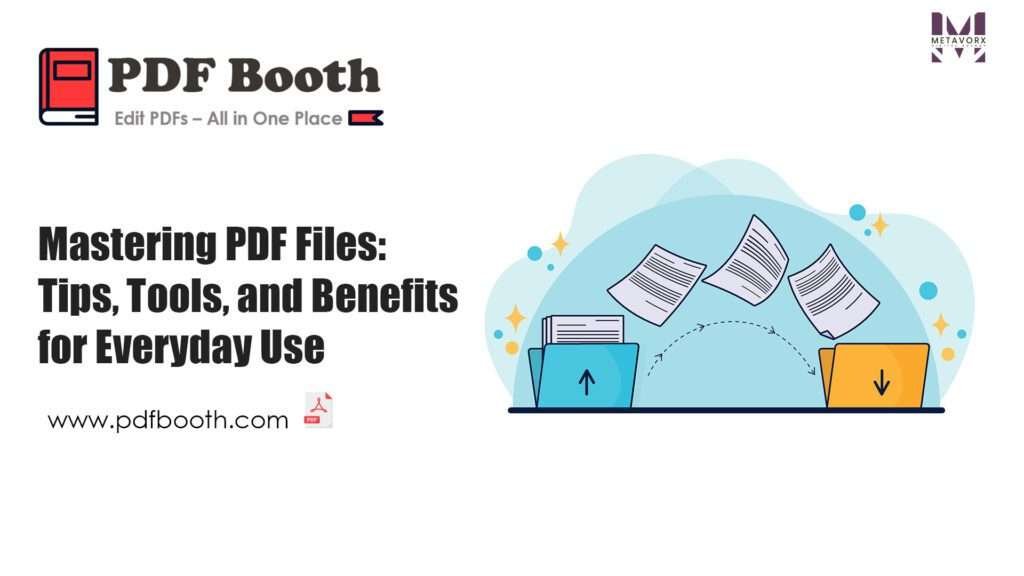Mastering PDF Files: Tips, Tools, and Benefits for Everyday Use

In today’s digital world, PDF (Portable Document Format) files have become one of the most reliable and widely used file types. Whether you are a student, business owner, or professional, PDFs help you share, secure, and store documents efficiently. From eBooks to resumes, invoices, and forms — PDFs ensure that your content looks the same across all devices. Let’s explore why PDFs are essential, how you can make the most of them, and the best tools to manage them.
Why PDFs Are So Popular
PDFs were created by Adobe in the early 1990s to make document sharing consistent. The key advantage of PDFs is their universality — a file created on one device will look identical on another, no matter what software or system is used. PDFs also preserve text, fonts, images, and layouts, making them perfect for professional presentations and official documents.
Another major reason for their popularity is security. PDF files can be password-protected and encrypted, allowing users to safeguard sensitive data. This makes them ideal for contracts, certificates, and financial records.
Top PDF Tools You Should Know
Managing PDFs has become easier than ever with the rise of online PDF tools. Here are some of the most useful ones:
- PDF Converter: Quickly convert Word, Excel, PowerPoint, or image files into PDFs and vice versa.
- PDF Editor: Edit text, add images, or rearrange pages without changing the format.
- Merge & Split Tools: Combine multiple PDF files into one or split large files into smaller, organized parts.
- PDF Compressor: Reduce the file size without losing quality, perfect for email attachments or online uploads.
- E-signature Tools: Sign documents electronically to save time and eliminate printing hassles.
Most of these tools are available online for free or at affordable subscription plans. Websites like Smallpdf, iLovePDF, and Adobe Acrobat offer easy drag-and-drop interfaces for fast results.
Tips for Using PDFs Efficiently
- Optimize for Accessibility: Always use readable fonts and include searchable text instead of scanned images.
- Use Bookmarks: Add bookmarks to long documents to help readers navigate easily.
- Secure Sensitive Files: Use passwords or redaction features when sharing confidential information.
- Compress Before Sending: Reduce file size to speed up uploads and downloads.
- Backup Regularly: Store PDFs on cloud platforms like Google Drive or Dropbox for easy access and safety.
Final Thoughts
PDFs are here to stay because they combine convenience, security, and professionalism. Whether you’re sending a report, filling out a form, or designing a digital brochure, PDF tools can make your workflow faster and smarter.
If you regularly work with digital documents, mastering PDF tools will help you save time and enhance your productivity. Explore different platforms, try out online converters and editors, and unlock the full potential of the PDF format today.
FAQs:
How do I create a PDF file?
You can create a PDF by using the “Save as PDF” or “Print to PDF” option available in most applications like Microsoft Word, Excel, or Google Docs. Online tools such as Smallpdf or iLovePDF also allow you to convert documents to PDF format for free.
Can I edit a PDF file?
Yes, you can edit PDFs using website like PDF Booth. This tools let you modify text, add images, or even rearrange pages without changing the original layout.
How do I combine multiple PDF files into one?
To merge multiple PDFs, use online tools like PDF Booth. Simply upload your files, arrange them in order, and download the combined version in just a few clicks.
Are PDF files safe to share?
Yes, PDFs are generally safe to share. For extra security, you can password-protect or encrypt your files. This is especially useful when dealing with personal or confidential information.
